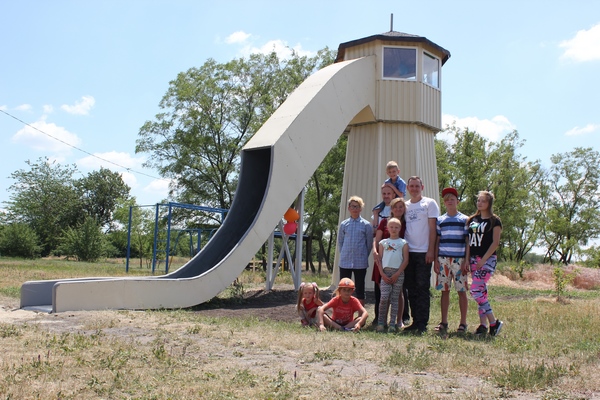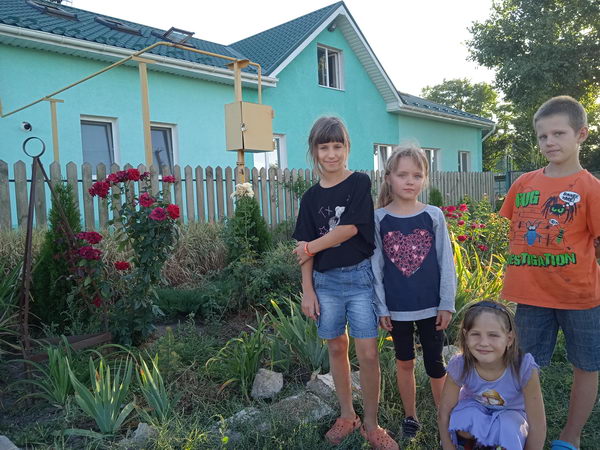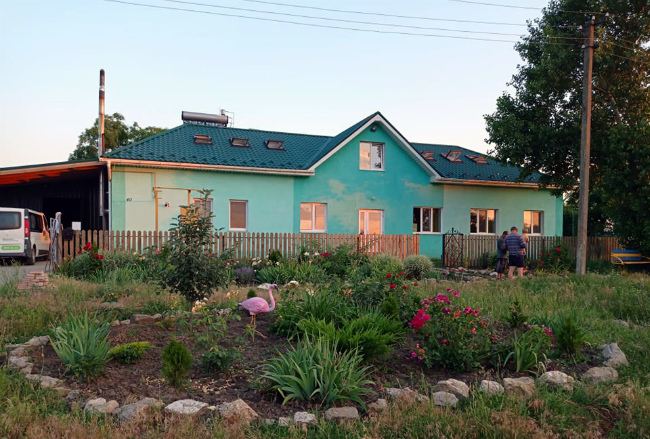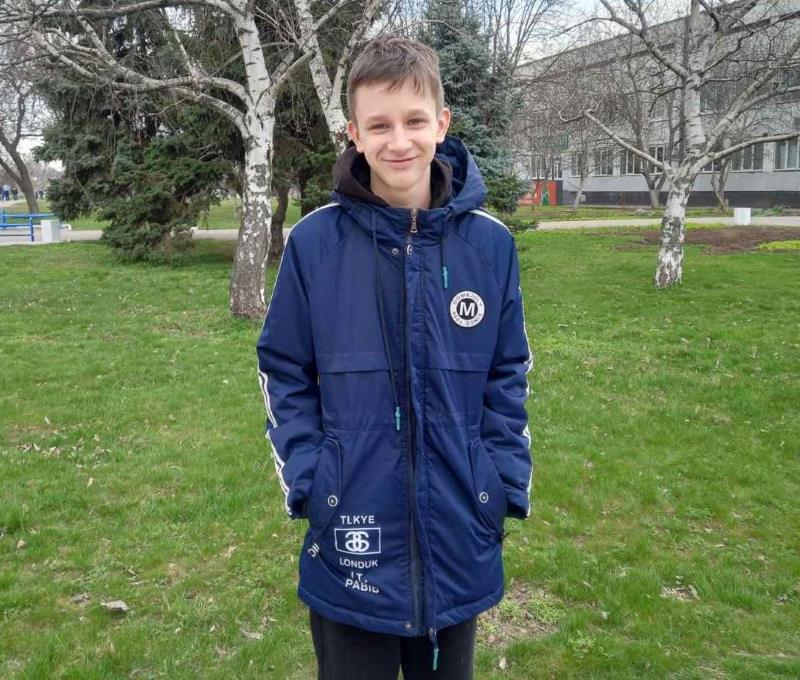Dear Friends!
Charity foundation Happy Child is creating an initiative to develop a village settlement of foster families and children's homes of a family type for the raising of both biological and foster children in a holistic community setting. Children with special needs are included. The village is to be located in Zaporozhye region.

We do not plan to reinvent the wheel but will make use, first and foremost, of the general principles of "ecosettlement", exemplified in the Russian community Kitezh. (The Kitezh website has English pages. If you read Russian, check out my 2010 "Report of My Trip to Kitezh".
What does a children's village have to offer?
Main stages of settlement development
Do you wish to participate in the project?
Report on donations and expenses for this project
Videos about children's eco-village
What does a children's village have to offer?
A children's village will serve as an alternative to warehousing children in state-run internats (orphanages). Foster families living together in the same rural environment will enable parents to help each other nurture and educate children.
As is well known, many foster children lag significantly behind their peers in intellectual and psychological development. Consequently, regular school becomes a senseless waste of time for them. In a children's village, thanks to the efforts of the parents working together, an individualized approach to instruction for such children becomes possible.
Contact with nature—simple physical work on the land and acquiring related skills—forms an important positive factor in children's formation and in the lives of adults in the community. In this way the children will spend more time in positive activity and not lose themselves in the virtual reality of computers or fall into crime.
However, work on the land does not mean complete disregard for technology and other social goods: both children and adults will make active use of computers, Internet, and similar resources for human benefit.
In the children's village progressive ecological practices will take root: energy conservation, ecologically clean (organic) farming, recycling and cleaning up of wastes.
One of the distinctive features of the village will be the care of children with special needs. Up to now, most such children end up in special orphanages for the disabled that lack any and all rehabilitative therapies and prospects for fulfilled adult life. Many families, we believe, will be willing to take on the task of raising children with special needs.
In the children's village sharing of resources is possible, for example, cooperative use of electronics and computers, access to the Internet, children's playgrounds and athletic fields, expensive instruments and tools, auto transport, and also mutual help with construction.
Establishing a children's community in a rural setting will spur positively the development of neighboring villages, since trained teachers, engineers, doctors will reside in the settlement, new technologies will take root, visitors will come including volunteers from Ukraine and other countries, and "green tourism" may be developed.
Finally, the children's village will give a model, expressed in the words of one psychologist, "for a simple, normal life" in harmony with nature and self.
Main principles or guidelines of the community
Life lived in holistic, harmonious relationship with self and nature.
A desire to be a blessing to people and to all living creatures, embodied in charitable activities.
Respect for the private life of each family and, at the same time, an understanding for the interests of the entire community.
Respect for the plant and animal world, ecology-sensitive upbringing.
Non-violence toward both persons and animals. Vegetarianism is welcome but not required. The raising of animals for meat production is not permitted.
Holistic spiritual, intellectual, and physical development of the members of the community.
Tolerance of the opinion of other persons and toward different religions (except for destructive trends like Satanism). Complementarity of religions, not exclusivity.
Preference for spiritual values over material.
Constant development of the creative and cognitive potential of all of the members of the community.
Openness toward the world outside.

Children of the village and their guests (September 2017)
Guidelines for Bringing Up Children
Holistic approach to intellectual, physical, and spiritual development of both foster and biological children.
Life for both children and adults in harmony with nature, society, and in concord with others.
Raising children according to personal example: adults consciously refrain from consumption of alcohol, smoking, drugs, obscenity, and physical or mental violence.
Observance of the rights of children in accordance with the UN Convention on Children's Rights.
Professional approach to the problems of foster/adopted children and children with special needs.
Non-coercive initiation of children to work (farm, shops, construction).
Education of children to a healthy style of living following adult examples in morning exercise, sports groups, hikes, calisthenics.
Introduction of children to charitable activity; help for neighbors; participation in social charity campaigns, volunteer work, and the like.
Collective approach to managing community life (community council).
Effective educational system; instruction of children in small groups; whole-person development.
Principal task: to teach children to think, to take pleasure in new learning, to see the true goals of education. At the same time, the children should have the opportunity to leave the community after completing school and to have the chance to enroll in a university or another educational institution.
Parents help one another in teaching the children (e.g., if you know English or understand auto mechanics, you can teach your child and a neighbor).

Light-house slide and the construction of Moomin house
Economic makeup of the settlement
The community aims to provide its own basic food products (environmentally clean). At the same time, farming operations should not hinder the adults from giving sufficient attention to the upbringing of children, particularly of orphans and children with special needs.
One of the sources of financial support for the community may be state benefits for foster families and compensation for village teachers, doctors (it is assumed that several adults will be teachers).
Also assumed is the use of effective and environmentally friendly methods of agricultural production.
Economical use of natural resources, energy-saving technologies, minimal pollution of the surrounding environment, reduction in the consumption of non-necessities will lead to a reduced expenses for the residents of the community.
Economizing measures enable greater resources to be applied to the educational program, creative activities, and to construction.
Construction of homes of original architectural design and of varied national styles will promote the development of "green tourism.
The main structures on the settlement grounds:
1. Club or community building (school, cafeteria, meeting room, clinic)
2. Homes of foster families
3. Summer house for the community
4. Garages and workshops
5. Athletic fields, pool
6. Waste treatment and pump station.
Number of families in the settlement
From 7 to 25 families amounting to a village population consisting in 30 to 90 persons (a greater number of inhabitants makes it difficult to maintain a sense of close-knit community).
Any construction on settlement land will belong to the community (a non-profit organization) and may not be offered for sale or trade.
Rules for enrolling a family in the community
1. Membership in the community may be granted for a family of adoptive parents, parent guardians, foster parents, or parent mentors of a family-type home.
2. With provisory admission to the community, housing (a house or part of a house), providing temporary residence free of charge, may be granted to a family with no fewer than two orphan children or a minimum of one special needs child (one having a disability).
3. Ownership of housing resides with Happy Child foundation.
4. A foster family (FF) retains the right of ownership of the living space in which it has lived up to the point of acceptance into the community, and the foster family may dispose of such property at its discretion.
5. A foster family has the right to continue living in the settlement until such time as all of the children are grown and have completed their education (up to age 23). After that, the foster family may either take on new children or vacate the housing for another family having foster children not yet grown.
6. In a few cases of families whose children are grown, where one or another of the parents has made a significant contribution to the life of the community (teaching, medical activity, farming, etc.), at the decision of the community council and with the agreement of the supervisory board of the NGO "Children's Village", such a family may receive permission to continue living in a community home.
7. If the community council and the supervisory council concur, citizens not meeting the standard requirement for admission to the community, but who nonetheless bring a special benefit to the community, may receive rent-free housing in the village, or, using their own funds, undertake construction of a house on community land or close to it.
1. Selection and purchase of a land plot 3,4 hectares in Ukrainka village (several plots were acquired in 2011-2020)
2. Two buildings of family-type orphanages were built in Ukrainka and a house in Lyubimovka.
3. A place is being set up for holding summer tent camps (a gazebo was built, swings, horizontal bars and bars, an outdoor tennis table, a lighthouse slide, a Moomin house, a pool and a trampoline were purchased)
4. Two foster families permanently live in the village (4 adults, 14 children).
5. Old house with 3 rooms bought in Ukrainka and need to be repaired
One of the options for the development of the settlement


To be done:
Help to families with educational needs of children (to hire tutor, excursions to museums)
Help with medical needs of children (teeth, treatment)
Help with car repair and purchasing electric car
Happy Home-6 construction
Moomin house construction
Construction of an outbuilding (garage, workshop, storeroom, firewood storage)
Road for easy access to buildings
Improvement of the summer camp territory, installation of a sports and playground
Construction of two or three more family houses and a community house
Construction of a group house for young people with special needs
Drilling a well for technical and irrigation water
Planting ornamental and fruit trees, shrubs, grapes
Here is the first and second houses and other pictures of the life in the village :

"Happy home -3" - July 2017

"Happy home -4" - June 2017

"Happy home -5" - Autumn 2017

The concert for the residents of the children's village and Ukrainka - Fall 2015

Project of future "Happy home -6"


Support Moomin house project


Happy Home-3 in summer 2020
Would you like to become a participant in the project?
If our ideas resonate with you, then you are welcome to take part in realizing the project:
- You may help financially at every stage of the project — selection and purchase of the land, construction, communications;
- Express constructive suggestions related to our concept of the children's village, or share experience you may have;
- Report your desire to become an active participant, and, where possible, a future resident of the village. (Please share in writing something about yourself— a short curriculum vitae and something about your motives.);
- help with building materials or the performance of construction, installation work;
- to facilitate the installation of donation containers in shops, pharmacies, banks and other crowded places. To do this, you just need to convince the owner of the establishment to allocate half a square meter to install the container;
- help as a volunteer in working with children, clearing the territory, cleaning up construction waste, cutting old trees;
- help with seedlings of fruit and ornamental trees, grapes;
- help spreading information about the project (repost or post links to the project on their websites and social networks);
- help in raising funds for the construction of the village.
Please get in touch with us for further sharing!
Report on donations and expenses for this project
Videos about the children's village:




